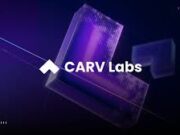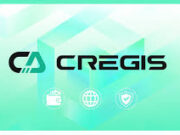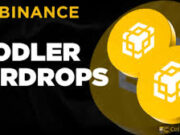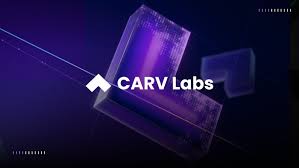The energy in the Web3 world rises every time builders gather around a shared challenge, and CARV’s latest community hackathon captured that excitement perfectly. Over the course of the event, more than 40 submissions were built on CARV’s SVM blockchain, demonstrating just how quickly developers are experimenting with new ideas in AI, gaming, and digital ownership.
Consequently, when CARV finally announced its winning teams, the results felt like a preview of the next wave of consumer-focused Web3 applications.
Source: CARV Developer Blog (external)
A Snapshot of CARV’s Builder Ecosystem
Before exploring the winning projects, it’s worth recognizing the environment that allowed them to emerge. CARV has gradually positioned itself as a home for gaming-native infrastructure, and its adoption of SVM (Solana Virtual Machine) architecture lets developers build fast, scalable applications without losing the UX standards mainstream users expect.
Therefore, during the hackathon, teams not only competed for recognition but also learned how CARV’s tooling, API layers, and data primitives could simplify their creative process.
For context, CARV has previously supported game studios integrating walletless onboarding, off-chain data proofs, and cross-game identity tools.
Source: https://carv.io (internal link)
Because of this foundation, the submissions ranged widely—from social products to collectible experiences to AI-augmented play. Yet three projects rose above the rest: Dreamz, PlayBeings, and Febro.fun.
Dreamz: A Social Network Designed Around AI Companionship and Shared Creativity
Among all the submissions, Dreamz captured attention quickly by aiming to reshape how people interact socially online. Instead of replicating a typical social feed, Dreamz blends AI-generated content, personalized communities, and identity-driven engagement loops.
How Dreamz Stands Out
Dreamz positions itself somewhere between a creative playground and a social hub, enabling users to collaborate with AI agents that help them build ideas, stories, artwork, and community spaces. Instead of trying to replace human connection, these AI companions act more like guides that spark participation.
For example, a user can generate a themed community, fill it with AI-generated imagery, and invite others to expand the world collaboratively. As users contribute, their actions feed into a persistent identity profile anchored on CARV’s SVM chain.
Source: Research on AI-assisted social platforms, MIT Technology Review (external)
Why Dreamz Impressed Judges
Dreamz stood out because it created an inviting path for new users who might not immediately understand blockchain tech. Rather than forcing interaction with wallets, private keys, or complex mechanics, Dreamz focuses on creativity first. The blockchain layer only emerges when it enhances ownership or collaboration.
Furthermore, Dreamz demonstrates how social networks can evolve beyond passive scrolling. With AI helping generate content, the barrier to community building becomes dramatically lower.
STOP
PlayBeings: A Bridge Between Games, Characters, and Real Player Identity
Although gaming is already CARV’s strongest community pillar, PlayBeings pushed that momentum forward with an idea built around interoperability and expression. Instead of treating every game as an isolated universe, PlayBeings aims to connect players, their digital characters, and the games they love through a cohesive identity bridge.
A Gaming Layer That Moves With Players
PlayBeings allows users to create persistent “Being” avatars that level up over time—no matter which game they’re playing. As a result, players gain continuity across digital experiences, and developers gain a shared identity layer they can plug into.
This type of interoperability mirrors the long-standing dream of many Web3 gamers: a future where game progress, achievements, reputation, and collectible assets don’t disappear when switching titles.
Source: https://carv.io/gaming (internal link)
The Project’s Technical Strength
What fascinated hackathon judges was how PlayBeings utilized CARV’s SVM environment to store identity components while keeping gameplay fast and responsive. Moreover, PlayBeings introduced features for developers, including:
- Cross-game quests
- On-chain badge rewards
- Character trait importing
- Optional off-chain syncing for heavy game data
These features illustrate how game creators can reduce onboarding friction by letting CARV handle identity standards behind the scenes.
Why PlayBeings Resonated With the Community
Players increasingly want consistency in how they express themselves across virtual worlds. PlayBeings taps into that desire. Instead of offering isolated NFT characters, it proposes a scalable ecosystem of evolving avatars. That flexibility made it feel immediately practical, especially with CARV’s growing set of game partners.
Source: Industry analysis from Naavik on digital identity in games (external)
Febro.fun: A Friendly NFT Marketplace With Social and On-Chain Discovery
The third winning project, Febro.fun, takes a lighter, more playful approach to Web3. Where many NFT marketplaces feel overly technical or financially intimidating, Febro.fun leans into a casual, accessible model focused on social engagement and smooth discovery.
What Febro.fun Built
Febro.fun lets users browse, mint, and trade NFTs with a clean interface that centers community rather than speculation. Additionally, it incorporates features designed for creators who want to launch collections without navigating complicated contracts.
Some standout elements include:
- One-click minting powered by CARV’s SVM chain
- Creator storefronts with integrated social profiles
- A community-curated discovery feed
- Lightweight mint-to-earn mechanisms
This setup helps shift NFT culture from financial hype to experimentation and creativity.
Source: https://solana.com/developers (external, for SVM reference)
Why Febro.fun Earned a Winning Spot
What elevated Febro.fun wasn’t just its design—it was its ability to onboard newcomers organically. By pairing user-friendly flows with verifiable on-chain ownership, the marketplace feels like something casual users could enjoy even if they’ve never navigated Web3 before.
Furthermore, Febro.fun demonstrated how the SVM architecture could be used to enable snappy minting and low-cost trading, making it appealing for artists and small communities.
A Diverse Showcase That Highlights CARV’s Direction
Although Dreamz, PlayBeings, and Febro.fun each tackle different aspects of the digital interaction landscape, they share a few meaningful common threads:
1. User-First Design
Each project prioritizes experiences rather than jargon. Consequently, they offer natural entry points for people who may be curious about Web3 but intimidated by typical blockchain friction points.
2. Integration With CARV’s Identity Layer
All three winners tie deeply into the identity and data primitives that CARV is known for. This reinforces CARV’s ambition to become a hub where online identity becomes portable, verifiable, and meaningful.
3. Fast, Scalable Infrastructure From SVM
CARV’s SVM implementation proved essential. Developers were able to ship real features without worrying about network congestion or slow confirmation times.
Source: Solana Foundation technical overview (external)
4. A Focus on Creativity Over Speculation
Although Web3 began with financial experimentation, the winning projects reflect a broader shift toward creativity, entertainment, and community-driven expression.
What These Wins Signal for CARV’s Ecosystem
Rather than treating the hackathon simply as a competition, CARV used it as a lens to understand what the next generation of builders wants. Through their submissions, developers emphasized:
- Cross-world identity
- AI-driven collaboration
- Effortless onboarding
- Social-centric design
- User empowerment through ownership
These signals align with CARV’s long-term goals of supporting gaming studios, creative communities, and developers shaping interactive digital economies.
Moreover, the strong turnout—40+ submissions—demonstrates that CARV’s builder base is expanding quickly. As more developers experiment with its SVM tooling, the diversity of applications will only continue to grow.
Looking Ahead: How CARV Can Keep the Momentum Going
Although the hackathon is now complete, its impact is only beginning. The showcased projects offer a preview of how CARV’s ecosystem may evolve in coming months. As CARV continues rolling out developer programs, partnerships, and ecosystem events, builders will have more opportunities to refine and expand their ideas.
Internal link: https://carv.io/blog
Because of this, many community members believe the next wave of CARV-powered applications will be even more ambitious—ranging from richer AI-supported worlds to visually dynamic game integrations, all backed by scalable, user-friendly infrastructure.
Conclusion
CARV’s hackathon wasn’t just a competition—it was a gathering point for innovators who are rethinking digital expression, gaming identity, and creative ownership. With Dreamz, PlayBeings, and Febro.fun taking the spotlight, CARV has shown that its ecosystem is attracting developers who want to build imaginative, useful, and user-centric Web3 applications.
The momentum generated during this event indicates a vibrant future for CARV’s SVM-powered universe. And as the broader Web3 world continues searching for platforms that prioritize speed, creativity, and community, CARV stands out as one of the ecosystems shaping that evolution.
Sources (Selected)
- CARV Official Website – https://carv.io
- CARV Developer Blog
- MIT Technology Review – AI-assisted social platforms
- Naavik – Analysis on digital identity in gaming
- Solana Foundation – SVM technical documentation
- Solana Developers Portal – SVM resources
- CARV Gaming Overview – https://carv.io/gaming



























